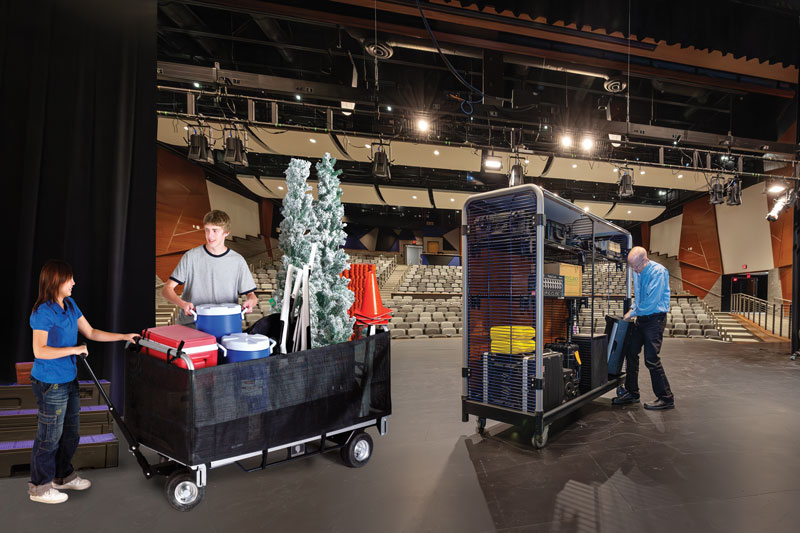 So many of today’s laws and standards come from the fact that someone, often many years ago, made a foolish mistake.
So many of today’s laws and standards come from the fact that someone, often many years ago, made a foolish mistake.
That’s exactly how automatic fire curtains got their start way back in 1903, when a single event changed the way theatres protected their performers and audience against disaster.
Numerous fire hazards. The Iroquois Theatre on West Randolph Street in Chicago, newly opened just a few weeks before, had already been cited by Fireproof Magazine for a number of potential fire hazards: the absence of a stage draft shaft, exposed wood in the proscenium arch, and not enough exits. Worse, the theatre contained large iron gates to prevent audience members in the balcony from moving down to more expensive seats.
Narrow fire escapes, confusing pathways from the stage house to the exits, fire exits hidden behind draperies, and complicated locks on the outside of exit doors made this theatre a disaster waiting to happen.
Rolling fireball. During a sold-out matinee performance of Mr. Bluebeard on December 30, an arc light shorted out and ignited a muslin curtain. The fire ran rampant into the fly gallery, touching off the highly flammable painted canvases above and sending the fire through the rafters.
The asbestos fire curtain snagged and could not be lowered. Opening the double freight doors at the back of the stage created a backdraft, turning the blaze into a rolling fireball that roared through the top portion of the house. The locked iron gates kept the audience from fleeing.
Estimates say that 575 people died in the fire, while another 30 died the following day of burns and other injuries.
Inventing a solution. Something had to be done—and it was John Clancy, founder of J. R. Clancy, Inc., who was in the best position to do it. He and his lead inventor, Claude Hagen, set to work to devise “the most perfect method of hanging and operating both asbestos and act drop curtains,” according to the 1904 J. R. Clancy catalog.
 Demonstrating the company’s commitment to health and safety, Clancy offered the working drawings for this patented system free of charge—a policy that continues to this day. The plans called for automatic release of the curtain, “the value of which has been demonstrated in several of the most modern New York Theatres, in which it has been approved by the Building Department and Board of Underwriters of that city,” the catalog noted.
Demonstrating the company’s commitment to health and safety, Clancy offered the working drawings for this patented system free of charge—a policy that continues to this day. The plans called for automatic release of the curtain, “the value of which has been demonstrated in several of the most modern New York Theatres, in which it has been approved by the Building Department and Board of Underwriters of that city,” the catalog noted.
Asbestos in fire curtains has long since been replaced with modern materials including Zetex, but the essential elements of any theatre’s fire curtain system are still based on this invention, born of tragedy more than a century ago.









